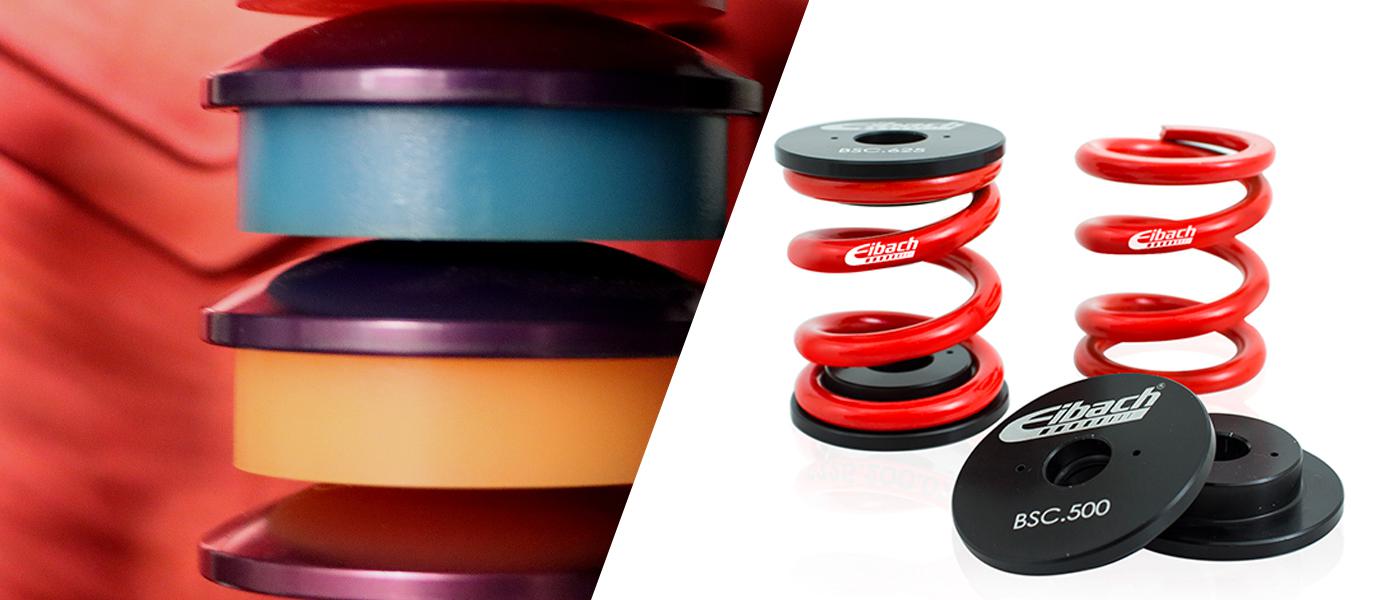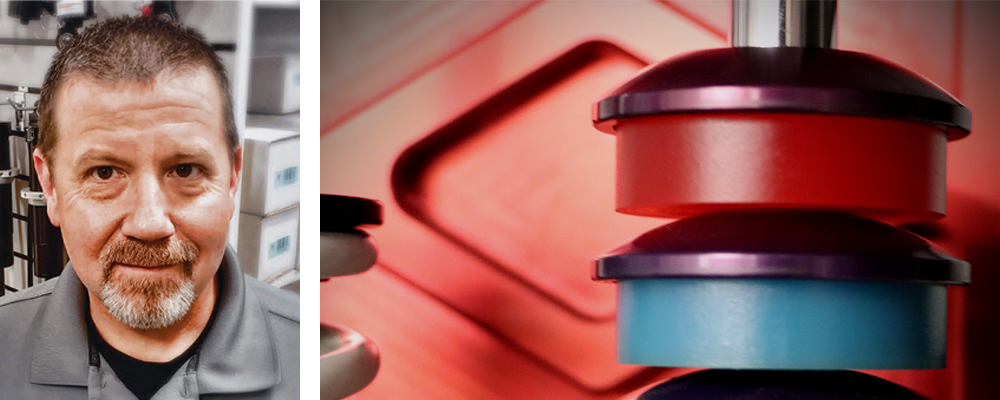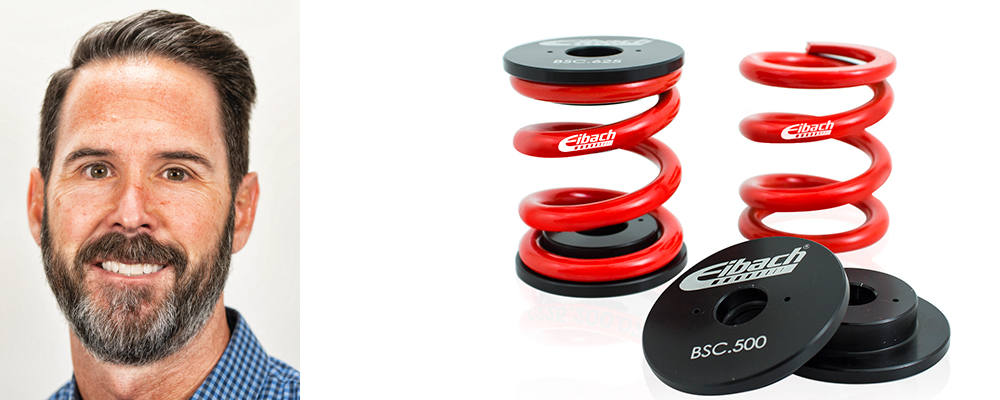Make The Case: Bump Stops Vs. Bump Springs

Although these suspension components perform similar tasks, the two designs use different approaches to accomplish those goals. That results in unique advantages in some situations and compromises in some others. Our experts weigh in on the applications where each solution is most effective, and why.
Bump Stops ADVOCATE:
Jason Enders, RE Suspension

The general purpose of a bump stop really depends on the application it’s being used in. There are situations where they offer advantages over a bump spring, but there are also situations where a bump spring might be a better option. We sell both for that reason.
In circle track racing, bump stops are generally used to control the dynamic attitude of the car. We want to get the car down to where we want it to ride, and we want to stay there in a pretty small window of suspension travel. The use of bump stops in these cars really all stems from ride height rules, and those rules typically specify heights that are much higher than are ideal. So the goal is to get the car as soft as possible and as close to the ground as we can. Bump stops keep the suspension operating in a small window of travel so we can have better control of variables like the camber curve, the caster curve, and the load on the wheels.
Bump stops also see a lot of use in road racing formats, but the purpose is a bit different. You generally don’t see ride height rules in that type of racing, and if there are ride height rules, they’re usually close to where you want it to be anyway. In this type of application, bump stops are typically used to mitigate the problems that could be caused by an anomaly on the track surface. For example, if you want to run 500-pound springs in the race car, but there’s this one dip or bump in the track that would require 600-pound springs to prevent the suspension from over-traveling, you can use a bump stop to do that. That way you’re not setting up the race car to deal with this one anomaly on the track.
One advantage that bump stops have over bump springs is that bump stops tend to be more forgiving on rougher tracks. If your setup is off a little bit or you change your driving line, polyurethane bump stops tend to be less harsh and less likely to cause instability or change your grip levels. These are inherently progressive—the further you get into the bump stop, the more rate it gains. That progressive character allows for a larger margin of error than a bump spring typically does.
Polyurethane and polyurethane foam bump stops also have a certain amount of hysteresis built into them, and that means the stop behaves different in compression than it does in extension. If I’ve got a bump stop that builds 100 pounds of rate at a quarter-inch of compression, it can have 50 pounds of force in extension if I design it that way. Springs essentially have no hysteresis—it’s going to apply more or less the same amount of force in extension as it does in compression. But with bump stop packages, we can intentionally dial in more hysteresis. So, for example, you might use 500 pounds of force coming into the corner, but as you get back into the gas, you don’t have the same amount of force trying to push back on the suspension. People thought hysteresis was bad for decades, but as we started playing around with it, we’ve discovered that it’s a very useful tuning tool for asphalt cars in particular. It really helps with sway bar timing and sway bar wrap.
Bump stops are much cheaper than bump springs, and they offer an advantage in packaging as well. Depending on the application and what we’re trying to do, I can build force out of a bump stop that’s a half-inch tall, whereas most of the bump springs that are available today are at least four times that height. In the road racing world, some open wheel cars with inboard suspension setups simply don’t have the room required to run a bump spring.
There are some other considerations to make. Bump springs generally last longer, and bump stops don’t do well in extreme heat, so you need to pay attention to that if you’re going to use them. The height also changes over time as they settle. As they get shorter, it changes your engagement point, so that means the car has to travel that much further to get the load that you’re expecting from it. But as with springs, if you keep an eye on the height of the bump stops you’re using as they take a set, you should be good to go.
Bump Springs ADVOCATE:
David Cardey, Eibach

Like a bump stop, a bump spring is primarily used to prevent the suspension from over-traveling, and it’s popular in setups where the primary spring might not have enough rate to completely hold the car up in a dynamic position. In an ideal setup, it’s going to provide a smooth transition from the primary spring to the bump spring so it’s not an abrupt change. I think that’s one of the main advantages of using two springs rather than a spring and a bump stop: A bump stop typically doesn’t have the travel or the variety of rate options needed to make that transition smooth while still stopping the car from over-traveling.
Bump springs have some advantages in road racing as well. If you’re running a softer primary spring that allows the car to sit on that bump spring, the preload that it creates is building grip because of the opposing force that it creates. Bump springs also are more consistent. As bump stops get hot, they tend to lose rate, and once you’ve heat cycled them enough times, they get brittle and start to come apart. The guys in the World of Outlaws who are still using bump stops are typically changing them out every night, whereas I tell everyone who uses our bump springs to change them yearly.
Bump springs aren’t as limited on rate options, either. You might have a few different rates to choose from with a bump stop, but with a bump spring we have about 20 different rates in the same size spring that range from 50 to 5,000 pounds. You’re not going to get that in a bump stop.
Of course, to get the most out of a combination like this, you’re going to need someone who has experience with a load rate machine. I wouldn’t recommend just trying something out on race day and hoping for the best. There are a lot of variables involved, so it’s probably going to take a little bit of experimentation to find an ideal setup between the main spring and the bump spring. Testing equipment will help you figure out where you’re at, document it, and determine how different adjustments are going to affect the car.
 MEMBERSHIP LOGIN
MEMBERSHIP LOGIN JOIN PRI
JOIN PRI


